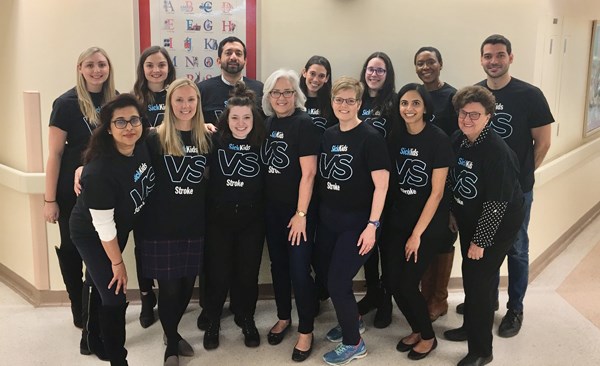A new diagnostic tool for paediatric stroke patients will improve diagnosis and treatment course
Summary:
One of the most common causes of stroke and stroke recurrence in childhood are abnormalities of the arteries in the brain. However, to date, diagnostic imaging tools have not been adequate to perform this task.

Children have strokes too! As in adults, a paediatric stroke happens when blood flow to an area of the brain is cut off. It’s a medical emergency that requires urgent treatment to minimize injury to the brain. Accurate diagnosis and timely treatment are important factors that influence outcomes.
One of the most common causes of stroke and stroke recurrence in childhood are abnormalities of the arteries (arteriopathies) in the brain. There are many different types of arteriopathy each requiring a different treatment approach. However, to date, diagnostic imaging tools have not been adequate to perform this task.
Motivated by this realization and in an important collaboration with Diagnostic Imaging, Dr. Noma Dlamini Director of the Children’s Stroke Program and an Associate Scientist in the Neuroscience and Mental Health Program at SickKids and Dr. Mahendranath Moharir Staff Physician & Clinical Director, Division of Neurology investigated the value of arterial wall imaging (AWI) in distinguishing among arteriopathy sub-types in paediatric stroke patients.
“Our approach was to use this promising imaging modality alongside standard imaging in children presenting with stroke over a number of years,” says Dlamini. “By using a standardized research imaging protocol, we were able to learn meaningful lessons that we can share with colleagues. The results indicate that it is possible to conduct specialized wall imaging studies in children presenting with stroke and that the findings provide additional information that help with the diagnosis and direction of their treatment.”
The researchers are working with their neurology and neuroradiology colleagues to show this technique is available and beneficial in the diagnosis of stroke sub-type, the prediction of stroke recurrence and hence, in the creation of treatment plans. Improving the technique itself will also prove valuable so it can be reliably used and accurately interpreted in specialized and non-specialized Magnetic Resonance (MR) departments.
This work was supported by The Children’s Stroke Program, The Auxilium Foundation and the SickKids Foundation. It is an example of how SickKids is making Ontario healthier, wealthier and smarter (www.healthierwealthiersmarter.com).

